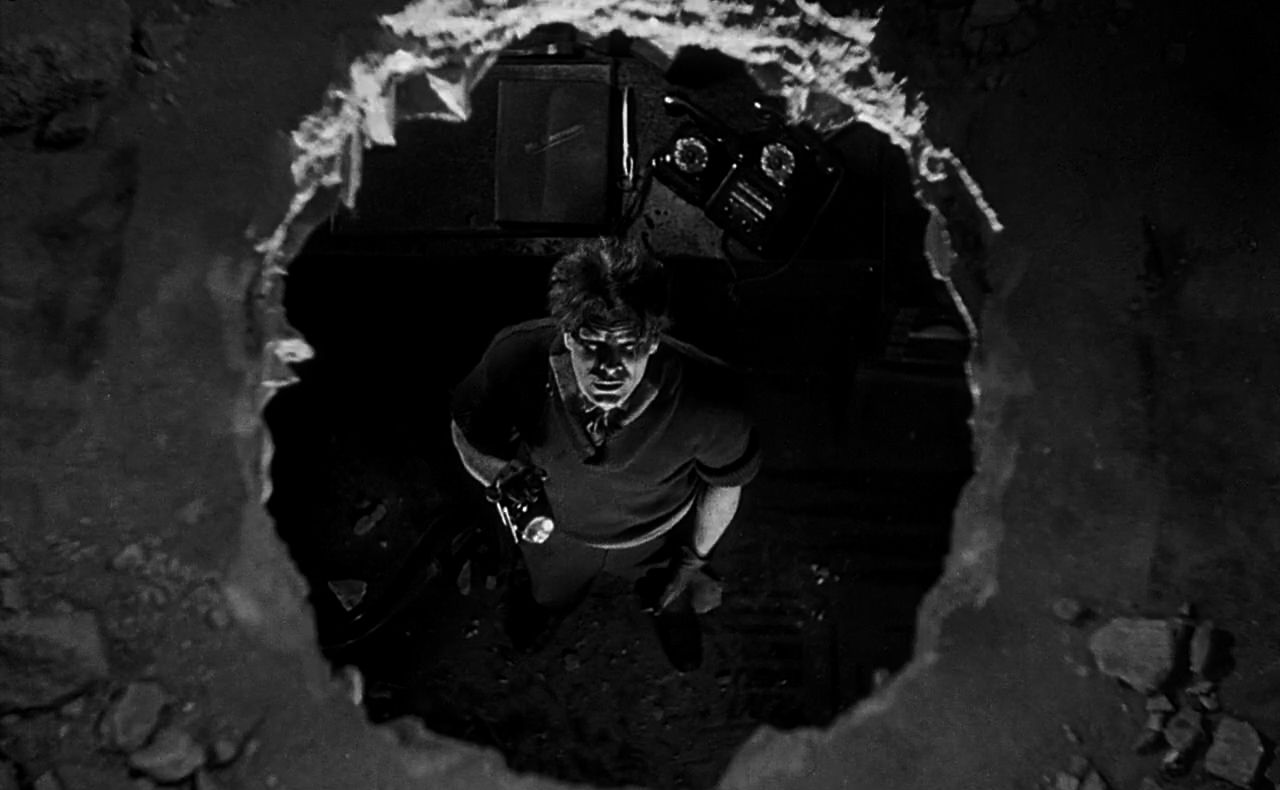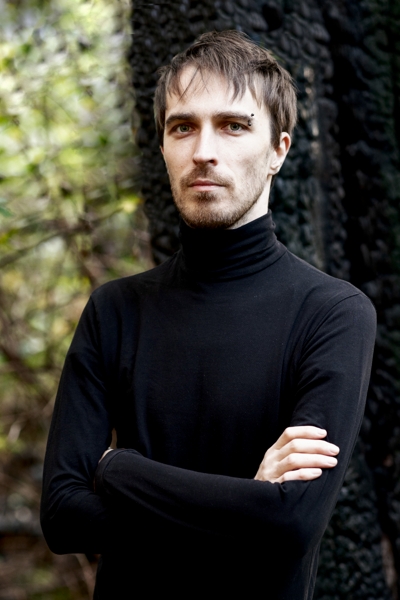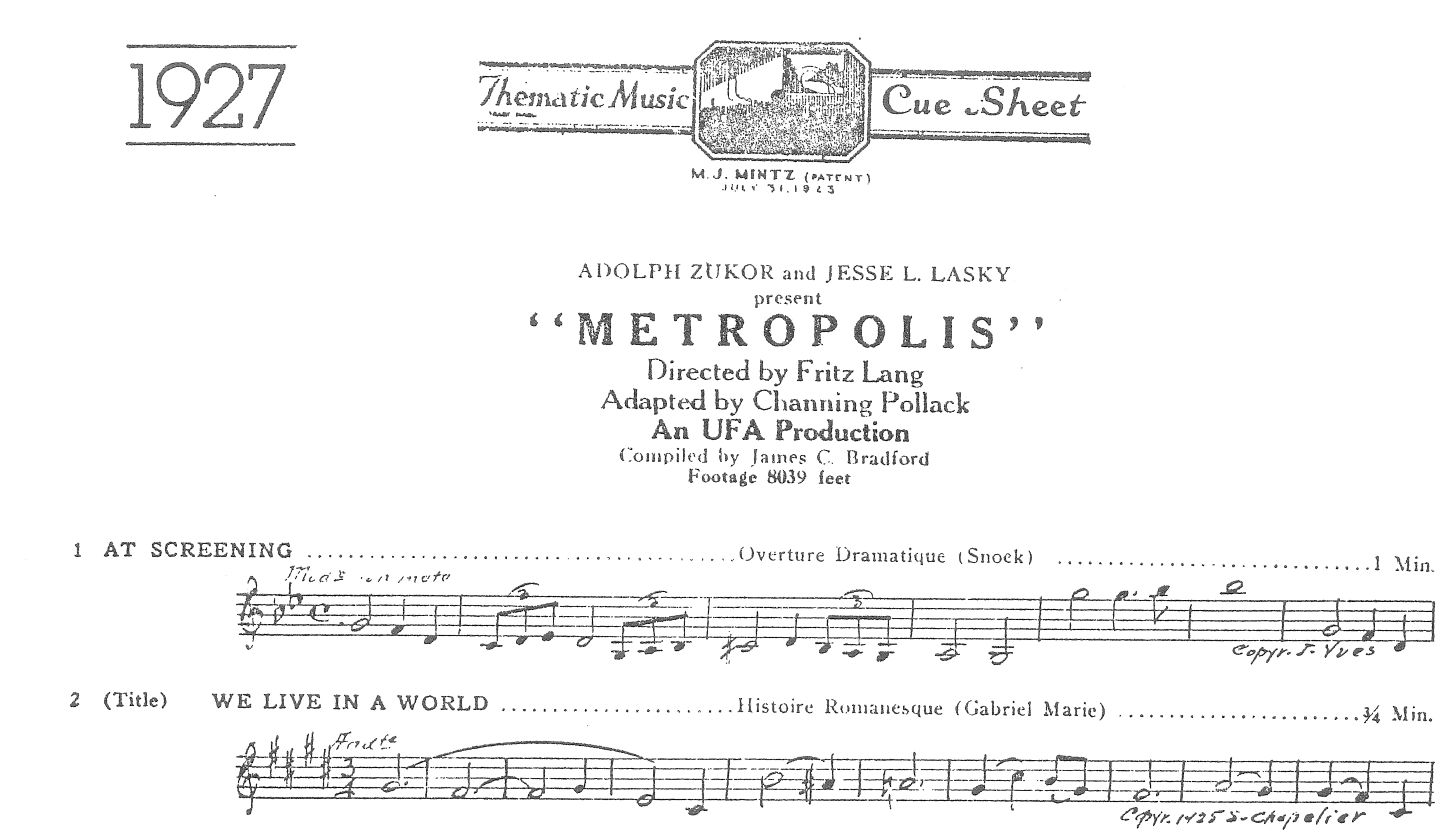
Richard Wagner in his, released in 1852, book Opera und Drama introduced the idea of Gesamtkunstwerk (can be translated as "total work of art"), postulate of the syncretistic unity of action and music. Wagner wanted to achieve a unification between plot and music by connecting leitmotifs (short musical phrases) with specific scenes, characters, items or emotions. Since Wagner, the use of leitmotifs has been taken up by many other composers. It was also quickly transferred to the ground of film music.
In 1910, in the journal Moving Picture World, wagnerism was predicted as the way of fitting the music to the emotions[1]. It is worth considering on what constitutes and the values of wagnerism for film music. There is no doubt that the communication of sound and story has a similar meaning in the film as in the works of Richard Wagner. First of all, leitmotif can be as short as few bars and can be easily expanded to longer forms, several dozens of bars. This feature means that a specific musical part can be easily adapted to the length of the scene. By following Wagner's idea, the composer will prepare individual motifs that emphasize the importance of each and every element of the story. In this way, each character, place and even emotional state will have their own music theme assigned. Leitmotifs allow viewers to memorize scenes, moreover, they easily recall associations with whole films or their elements.
Let's take a look at any Hollywood soundtrack. Famous Imperial March (Darth Vader's Theme) was composed by John Williams for The Empire Strikes Back, the second instalment in the original Star Wars trilogy. This two-bar theme is, next to the main theme, the most recognizable melody of the whole series. Maybe it is one of the best known film themes in general. The Imperial March is first heard in The Empire Strikes Back, from that moment the song appears in every film in the series, each time when the character of Vader appears (or at least there is a reference to this character).
The film M (1931) was the first sound film by Fritz Lang, the director used the musical theme to create tension - the murderer whistles the melody by Grieg - The Troll's Dance every time before committing a crime.
During the 1930s and 1940s, European composers worked out the so-called "classic Hollywood score" - a standard approach to film music, which was extensively drawing from the concept of late romantism and wagnerism, predicting the use of leitmotifs. Romantic approach have been widely used in Hollywood film music for at least twenty years, until the rock 'n' roll era.
[1] *See: *Kassabian, A. (2005). Music and Cinema. Edited by James Buhler, Caryl Flinn and David Neumeyer. Wesleyan University Press, 2000., *p. 66.*

If you can think of any particular style, instrumentation or arrangement that would fit to your project - I can do it for you. Sky is the limit. Just share your idea I'll create your desired soundtrack.
But if you prefer to stay focused on other aspects, you can show me your project, no matter if it is a film, spectacle or video game, you can show me our project and I'll come up with something exclusively for you.
I can provide you either score sheets or complete, mixed and mastered recordings. Nowadays composer can create big projects only with computer and samples but sometimes real instruments are better solution. You can decide what will be recorded and ho it will be done.
 Making music in terminal
How far can we go with digital minimalism? Can we make music on cheapest computer?
Making music in terminal
How far can we go with digital minimalism? Can we make music on cheapest computer?
 Leitmotif in film scoring
What are leitmotifs? Why are they great way to create a memorable soundtrack?
Leitmotif in film scoring
What are leitmotifs? Why are they great way to create a memorable soundtrack?
 What are cue sheets?
Cue sheet makes it easier to prepare a good soundtrack. Let's see how it looks and what its history is.
What are cue sheets?
Cue sheet makes it easier to prepare a good soundtrack. Let's see how it looks and what its history is.